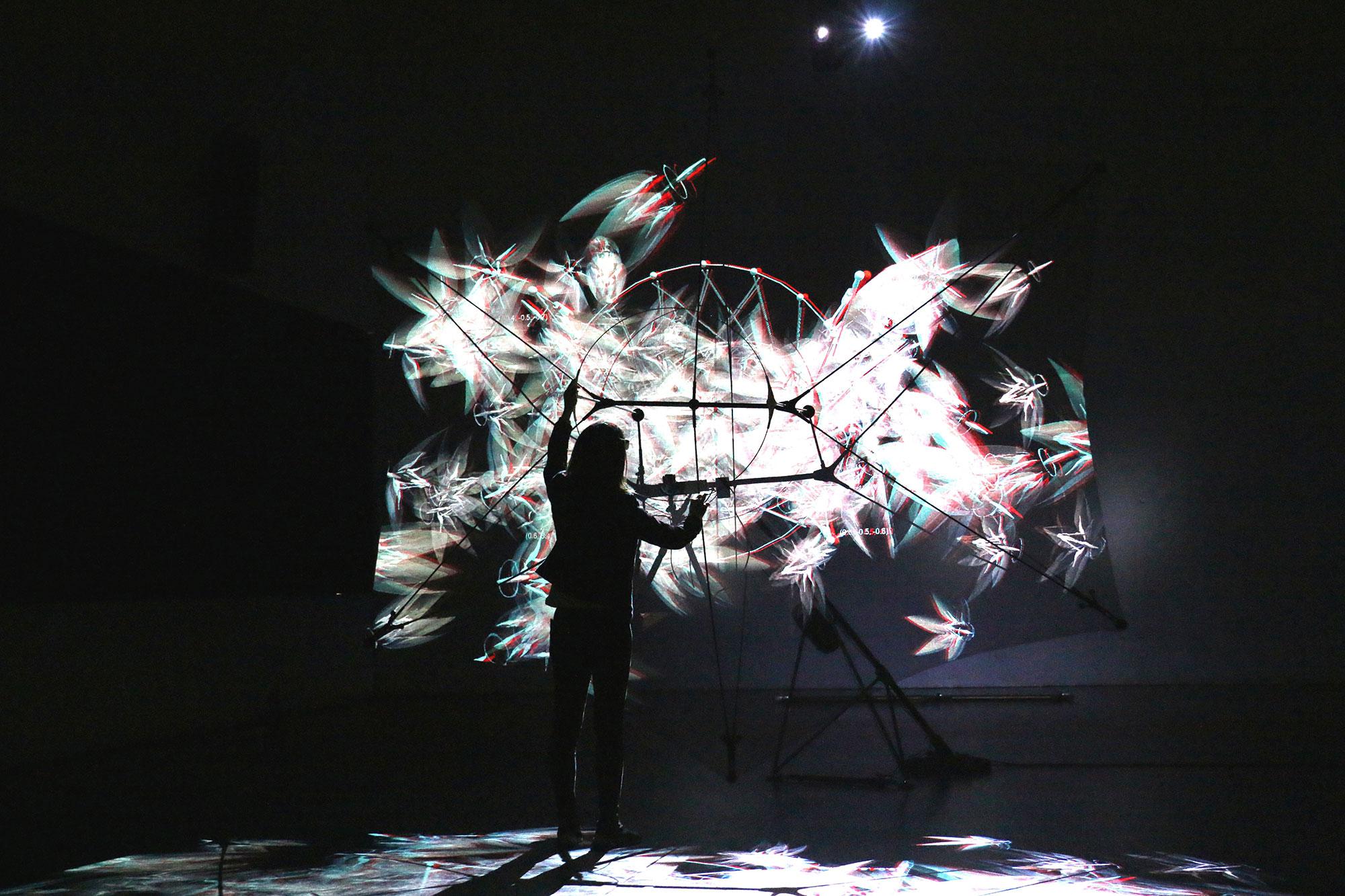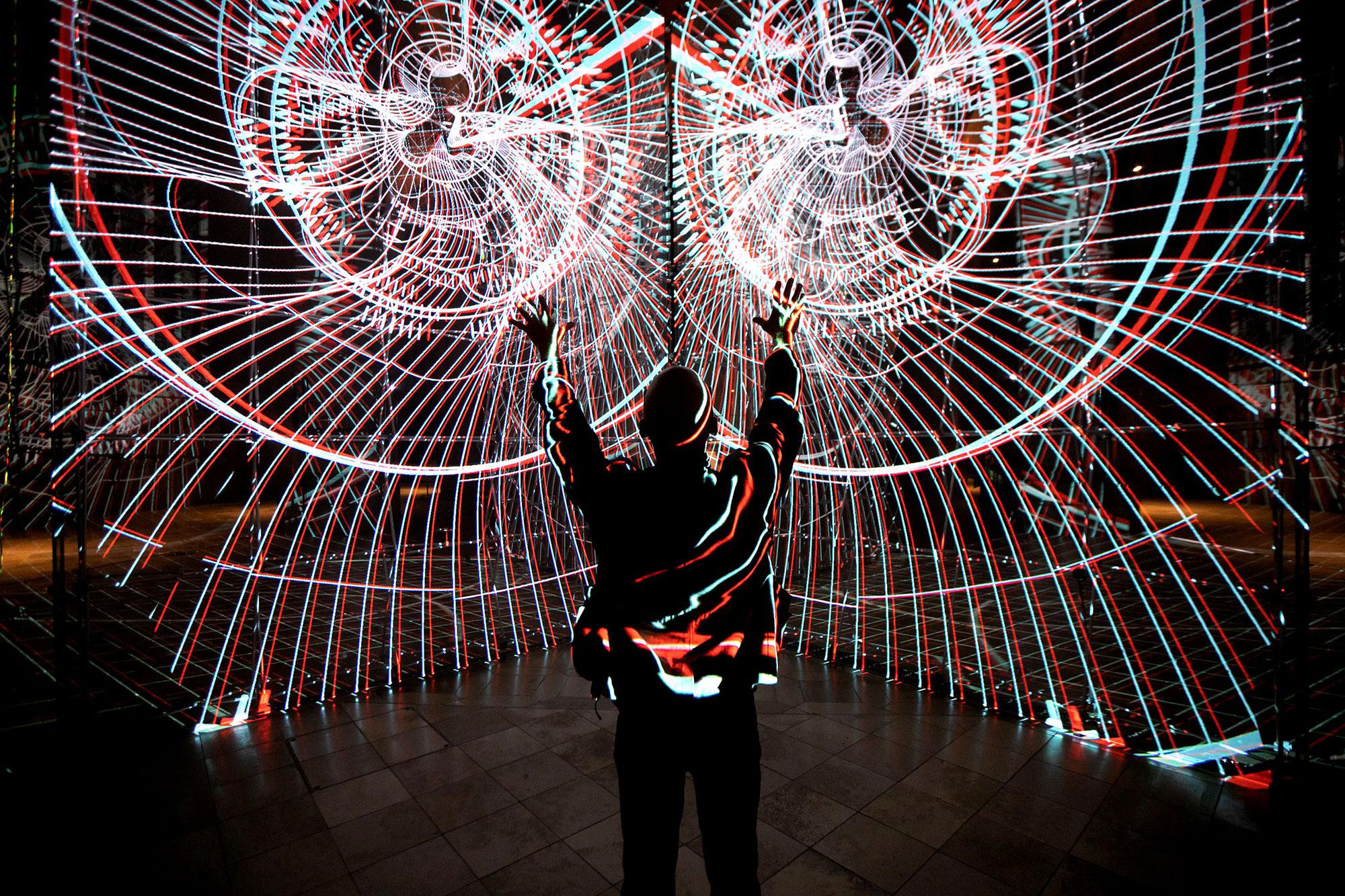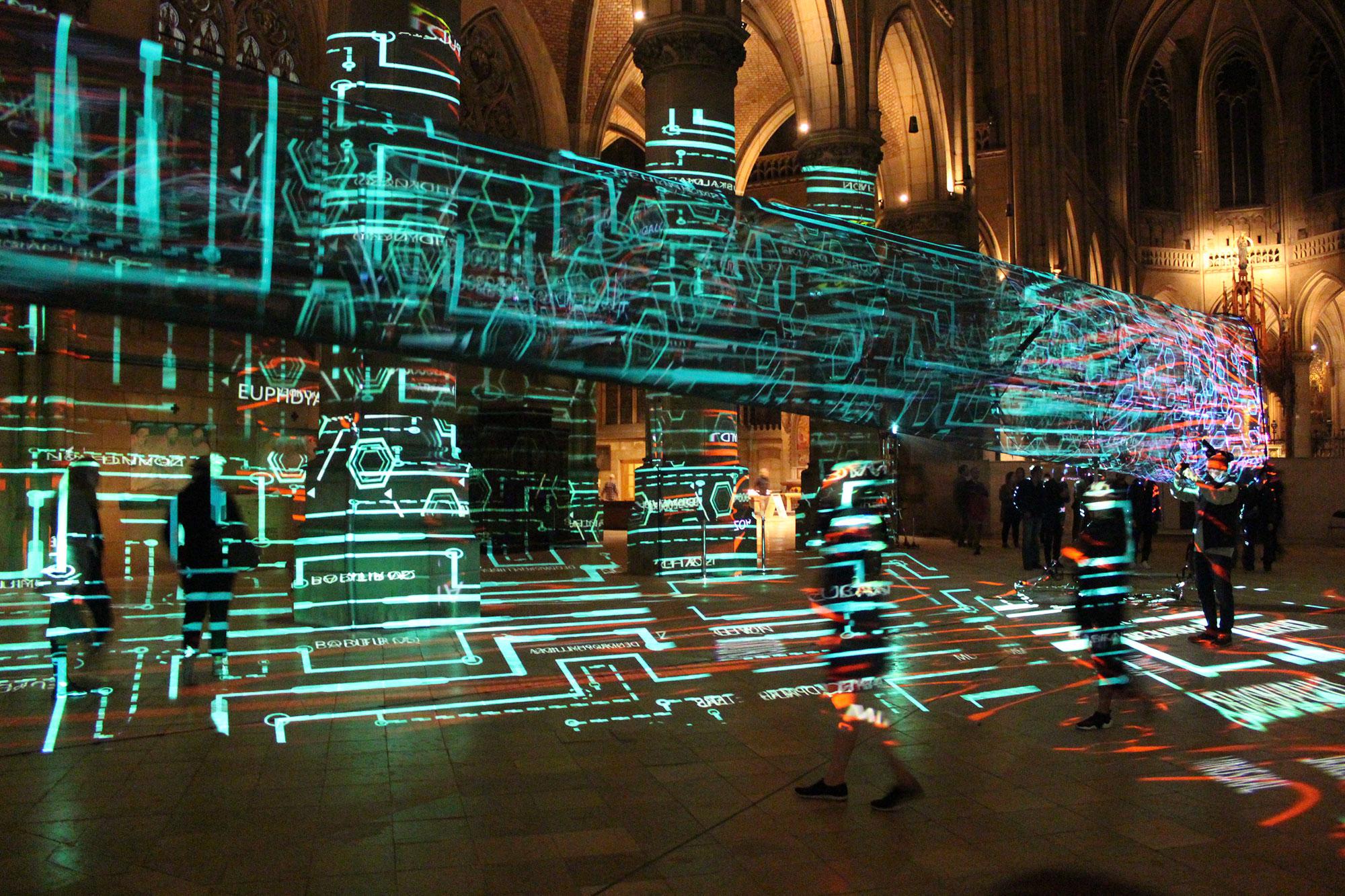
LightSense. Avec l'aimable autorisation des auteur·es © 2022-2023
Opening this Friday, 22 September, the new EPFL Pavilions exhibition Cyber Physical: Architecture in Real Time presents four monumental, dynamic and immersive installations that transform our relationship to physical or digital spaces.
Digital technologies and the large-scale deployment of artificial intelligence are opening up new prospects for the future of our built environment, and are poised to profoundly alter our relationship with the architectures we experience. These questions are at the heart of the exhibition Cyber Physical: Architecture in Real Time, curated by EPFL professor and EPFL Pavilions director, Sarah Kenderdine.
Equipped with simple red/blue glasses, visitors will be able to immerse themselves in a captivating environment of light, sound and movement. These kinetic installations are the result of a fusion between complex architectural structures and 3D digital projections. Thanks to artificial intelligence and interactive technologies these sculptural works are capable of listening, learning and reshaping themselves in real time in response to the public, creating new hybrid spaces where the tangible and the virtual intertwine.
Envisioning collaborative and sensorial architecture
In the age of "smart buildings", Cyber Physical prefigures an architecture that goes beyond functionality and aesthetics to become an entity in constant evolution. Human-centred, it favours intimate and engaging experiences between the space and its users. Creative AI, considered as an integral part of the architectural envelope, thus paves the way for a reactive and collaborative architecture that improvises and adapts to their actions.
This ensemble of works, presented at EPFL Pavilions for the first time in a single exhibition, is the culmination of research carried out by Uwe Rieger and Yinan Liu at the arc/sec Lab of the School of Architecture and Planning at the University of Auckland, New Zealand.
Echoing the research and experimentation that take place at EPFL in the fields of architecture, engineering and computer science, Cyber Physical aims to create a dialogue with those who are studying and shaping technologies and architectural theories for the future of our constructed environment. Furthermore, the exhibition makes novel ideas of space accessible to a wide audience, allowing the public to imagine and appropriate cyber-physical architectures in a sensory and playful way.

LightWing II: A digital journey at your fingertips
The first installation, LightWing II,offers a sensory and interactive experience of digital spaces. A delicate translucent wing, in the hands of the visitor, acts as an almost invisible screen that gives shape to 3D projections. When manipulated, it immerses the user in virtual dreamlike environments - swarms of creatures, a silky bubble, a velvet vortex or a forest of dandelions - that come to life and react to the slightest of its oscillations.
By combining three-dimensional digital animations with a moving physical structure, LightWing II creates a sensory relationship between the user and a virtual environment, while also involving other visitors. The installation becomes a collective experience, a hybrid space that is at once tangible and immaterial.

LightTank II: The physical space multiplied
The second room of the exhibition is transfigured by the LightTank II installation, a monumental transparent structure. Its four walls, arranged in an "X" configuration, are enveloped in 3D digital projections that transcend and expand over the physical space. The foreground and background merge, the physical and digital spaces perfectly overlap.
Captors allow the audience to activate and interact with the dynamic three-dimensional projections that evolve around them. Viewable in 360°, LightTank II offers an interactive experience with multiple viewpoints, an immersion in a holographic volume in constant mutation.

LightSense: An emotional and intimate experience
The third installation, LightSense, proposes an intimate interaction with an immersive and responsive architectural body driven by artificial intelligence.Suspended above the visitors, it unfolds two large translucent wings that move in a bird-like motion. Their 12-metre span is expanded with 3D digital projections that evolve and transform in response to the audience.
A microphone placed directly underneath the structure invites visitors to vocally interact with it. Trained on 60,000 poems, the installation listens and responds, creating a poetic and personal dialogue. Its responses are truly associative and unpredictable, the emotional tenor of each conversation influencing the projections. Physical movement and digital animation intertwine, transporting visitors into spaces of love, anger, curiosity, and joy.

LightScale II: Immersion in an ocean of data
The largest room houses LightScale II, an installation at once lightweight and colossal that spans over 20 metres. Maintaining a delicate balance thanks to a system of counterweights, the elongated horizontal structure swings gracefully in the exhibition space. Its slow and smooth movements, captured by a position sensor, influence the 3D animations that run across its transparent surface. The installation thus evokes a giant whale traversing a virtual ocean or materialises invisible sea creatures. By enabling the audience to physically interact with digital data, LightScale II gives substance to multi-dimensional dreamlike narratives, and confers narrative and emotional power on the spatial environment.
22.9.2023.-16.6.2024
EPFL Pavilions, Pavilion B
Tuesday-Sunday, 11 am-6 pm
Free Entry
Opening Night
Thursday 21.9.2023
5 pm-9 pm, Pavilion A
go.epfl.ch/CyberPhysical_Opening
Cyber Physical Symposium
Friday 22.9.2023
9 am-5 pm, Pavilion A






